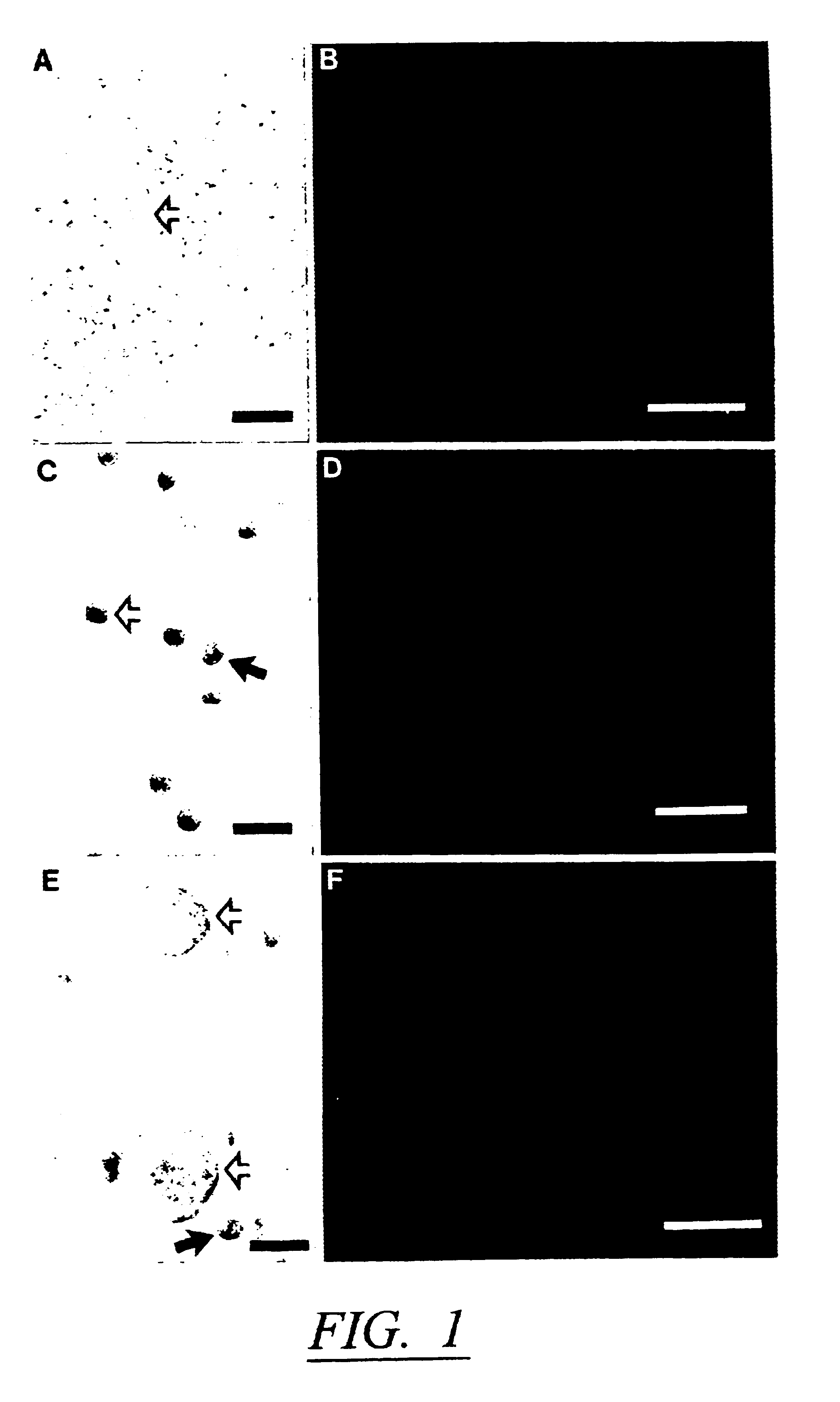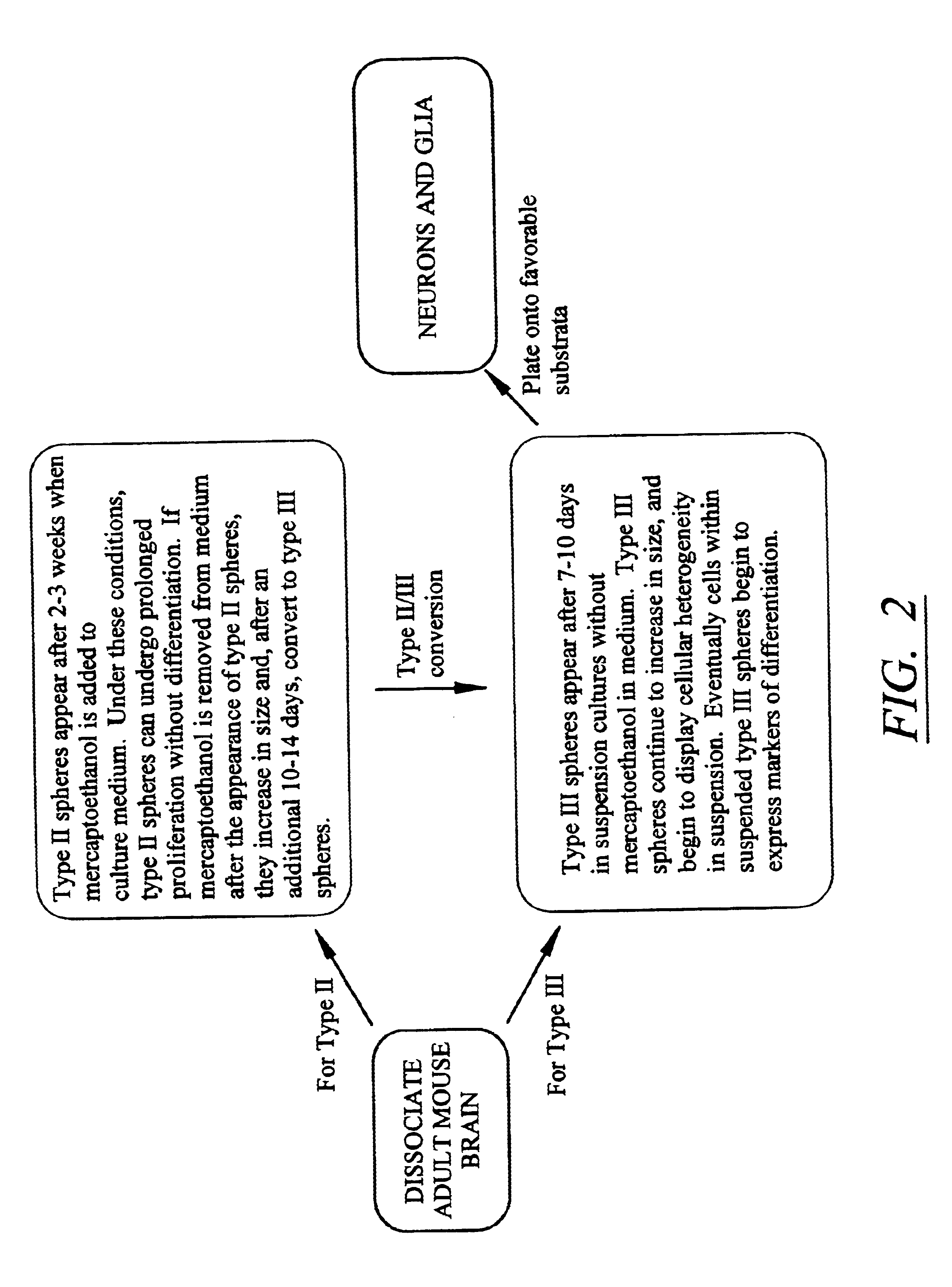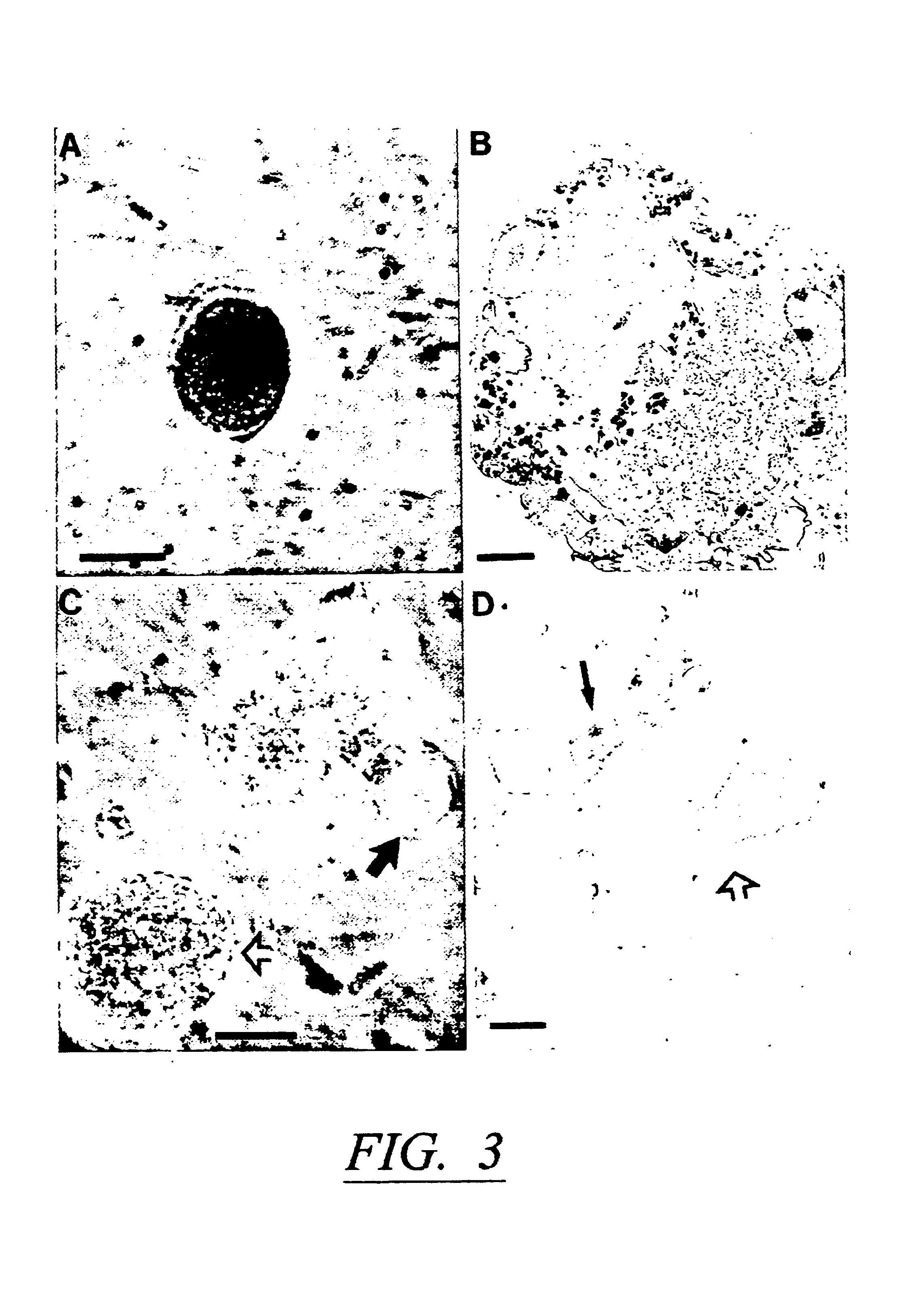Isolated mammalian neural stem cells, methods of making such cells
a neural stem cell and mammalian technology, applied in the field of new mammalian brain cell types, can solve the problems of not being able to distinguish individual cells within the clones, and presumably not being able to survive under these culture conditions
- Summary
- Abstract
- Description
- Claims
- Application Information
AI Technical Summary
Problems solved by technology
Method used
Image
Examples
example 2
The Production of Type II Clones
Type II clones, similar to type I clones, were obtained from adult ICR, transgenic or mutant mice, or biopsy specimens from human temporal lobe (for epilepsy surgery). In addition, Type II clones were also generated from the adult human brain, and from dead animals with long post mortem intervals when the animals were kept at 4.degree. C.
The brains were dissociated and cultured as previously described for the generation of type I clones. Briefly, extracted brain tissues were minced, washed, and transferred to a beaker containing 0.25% trypsin and EDTA. After being mixed on a magnetic stir-plate for 15 minutes, the culture was triturated with a plastic pipette, filtered through sterile gauze, centrifuged, and resuspended in DMEM / F12 medium+N1 supplement, plus 5% FBS, plus 20 .mu.g / mL pituitary extract (from Gibco) and grown in suspension cultures by plating at high density on a non-adhesive substrate.
Cells were plated and fed as described above for the...
example 3
The Production of Type III Clones
Similar to the type I and type II clones, Type III clones were obtained from adult ICR, transgenic or mutant mice, or biopsy specimens from human temporal lobe, or from the adult human brain, or from dead animals with long post mortem intervals when the animals were kept at 4.degree. C. The brain source was dissociated as described in Examples 1 and 2 above, and the cells were grown in the suspension culture described above either without contact inhibiting factors, or, more often with a contact inhibiting factor such as mercaptoethanol. The basic media for culturing type III cells was the same as that used for culturing type II cells. Namely, the media comprised insulin (5 .mu.g / mL), putrescine (100 .mu.M), progesterone (20 .mu.M), sodium selenite (30 .mu.M), pituitary extract (20 .mu.g / mL), transferrin (100 .mu.g / mL), 10 ng / mL basic fibroblast growth factor (bFGF), 10 ng / mL epidermal growth factor (EGF), and 5% fetal calf serum (FCS) in DMEM / F12 me...
example 4
Fixing of Cultures for Staining or Antibody Testing
Cultures are fixed in one of two ways depending upon the cultivation paradigm. Adherent clones (cultivated on plastic or laminin-coated plastic) are washed three times with room temperature Dulbecco's PBS (phosphate buffered saline) and then fixed either with 10% acetic acid in pure ethanol at -20.degree. C., or ice cold 4% paraformaldehyde in PBS. After 3 / 4 to 1 hour, the fixative was removed and the cultures were washed three times with PBS.
Clones cultivated as suspension cultures were collected in a 15 ml plastic tube and centrifuged to form a pellet. Culture medium was aspirated and fixative (described above) was added to the pellet. Clones were then triturated and kept in fixative for 3 / 4 to 1 hour, after which time the cells were again centrifuged and washed in PBS. Finally, the pellet was resuspended in a small volume of fresh PBS, and small aliquots of cells were placed on polylysine-coated coverslips and allowed to dry befo...
PUM
 Login to View More
Login to View More Abstract
Description
Claims
Application Information
 Login to View More
Login to View More - R&D
- Intellectual Property
- Life Sciences
- Materials
- Tech Scout
- Unparalleled Data Quality
- Higher Quality Content
- 60% Fewer Hallucinations
Browse by: Latest US Patents, China's latest patents, Technical Efficacy Thesaurus, Application Domain, Technology Topic, Popular Technical Reports.
© 2025 PatSnap. All rights reserved.Legal|Privacy policy|Modern Slavery Act Transparency Statement|Sitemap|About US| Contact US: help@patsnap.com



